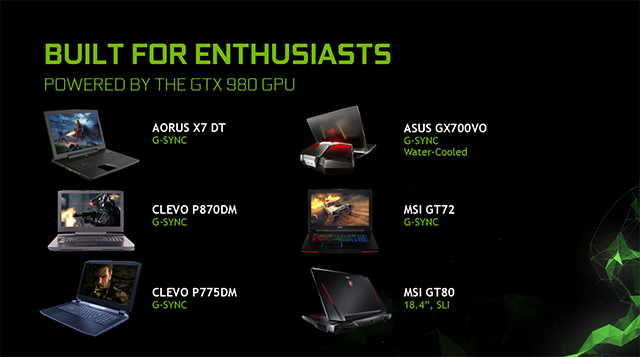Question is, why wasn't there a full GM204 mobile from the beginning? It may very well be, for example, that obtaining a high quantity of fully enabled low leakage parts was at first impossible, but has now become possible. In which case even at a 100W TDP there may be a large increase in performance.My problem is the article mentions variable TDP from 100-185W. At 100W it would probably be barely faster than a 980M.
Or it may be that fully enabled GM204 mobile was simply held back for purposes of having a refresh later, in which case, as you said, there will be no or low performance increases at 100W.




